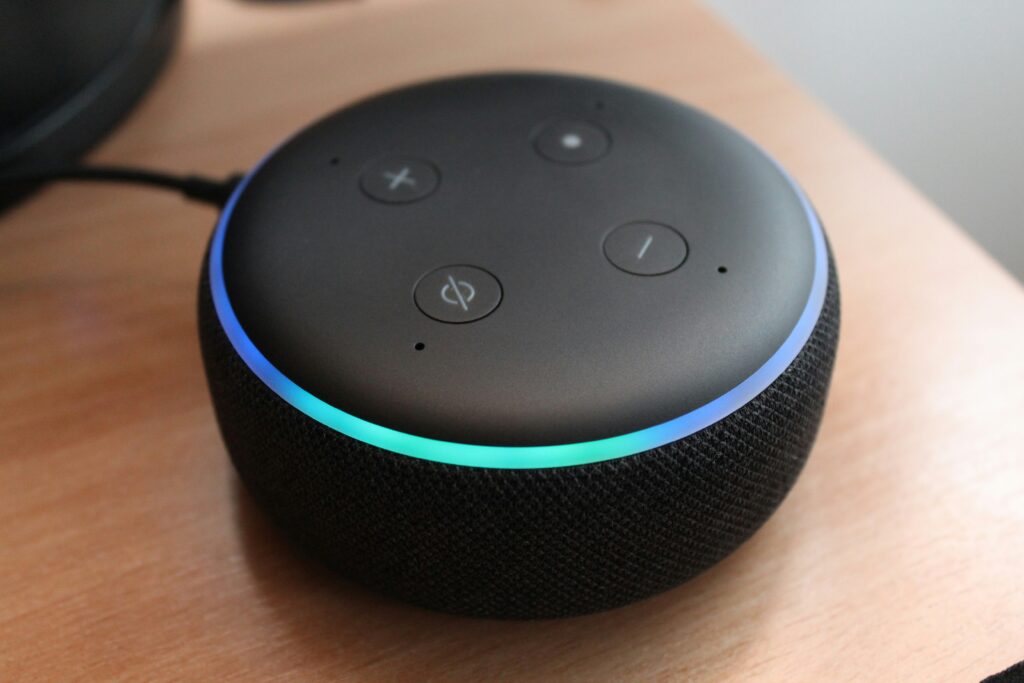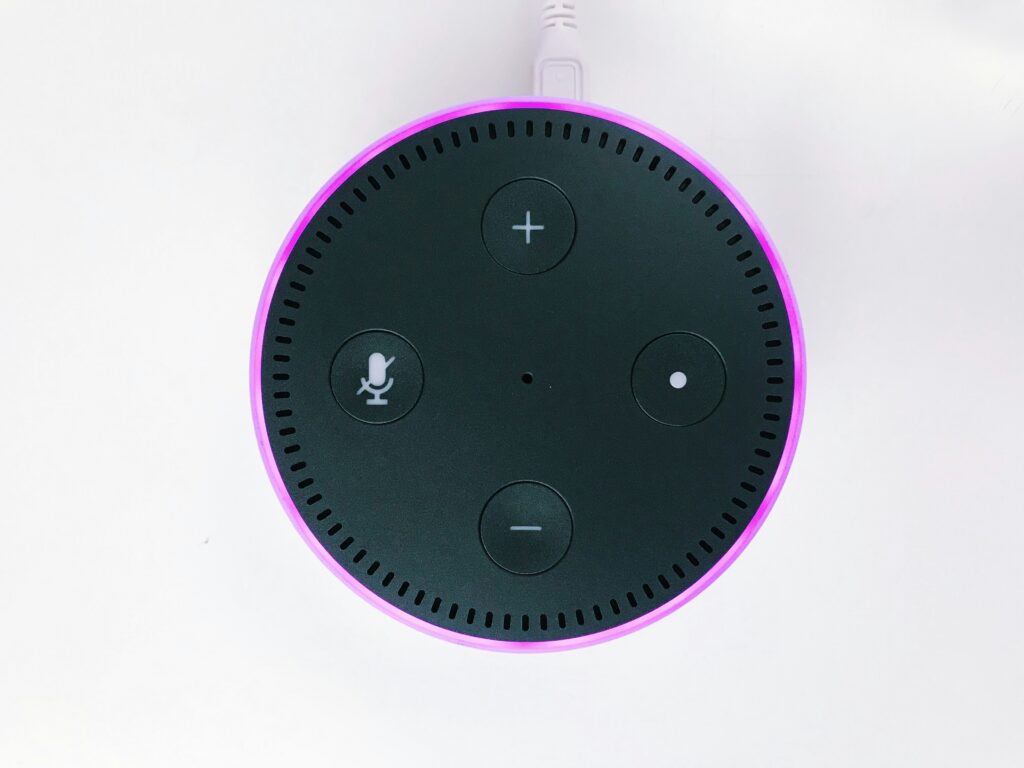Discover an untapped realm of convenience and efficiency with the assistance of modern technology’s finest – Alexa and Siri. These voice-activated virtual assistants, powered by artificial intelligence, have revolutionized the way we interact with our devices and accomplish daily tasks. This post delves into the heart of this technological marvel, revealing how to unlock the power of voice assistants, for an effortless and efficient lifestyle.

Imagine transforming your home into a smart haven, or accomplishing multiple tasks simultaneously – all through simple voice commands. The advent of voice assistants like Alexa and Siri has made this possible. This post sheds light on the various features and functionalities of these voice assistants and guides you through mastering them for optimal use.
In an era where convenience is key, voice assistants have gained massive popularity. However, many users still remain unaware of the full capabilities that these intelligent virtual buddies possess. This post aims to bridge that gap, by exploring in-depth, the vast potential of Alexa and Siri.
From setting alarms and reminders, to controlling smart home devices, to fetching real-time news and weather updates – the possibilities with Alexa and Siri are endless. As you journey through this post, you’ll uncover tips and tricks to enhance your interaction with these voice assistants, enabling a truly effortless and efficient way of life. Prepare to master Alexa and Siri, and redefine convenience like never before.
Understanding Voice Assistants: Alexa and Siri
Voice Assistants have revolutionized the way we interact with our devices. Amazon’s Alexa and Apple’s Siri are at the forefront of this technological revolution. They leverage advanced Natural Language Processing (NLP) and Machine Learning (ML) algorithms to understand and respond to human commands.
Working Mechanism of Alexa and Siri
At their core, Alexa and Siri work on the principle of voice recognition and language interpretation. When a user speaks a command, these voice assistants convert the audio into text using Automatic Speech Recognition (ASR). This text is then processed by the NLP system to understand the user’s intent.
AI plays a crucial role in this process. It helps the system learn from previous interactions and improve its understanding over time. By utilizing sophisticated algorithms, these systems can even understand the context and deliver personalized responses.
Capabilities of Alexa and Siri
Both Alexa and Siri offer a wide range of capabilities. They can perform simple tasks like setting alarms or reminders, playing music, and providing weather updates. However, their capabilities extend far beyond these basic functions.
For instance, Alexa can be integrated with smart home devices to control lights, thermostats, and security systems. Similarly, Siri can interact with various Apple services and devices to send messages, make calls, and even control Apple HomeKit-enabled devices.
Unlocking the Potential of Alexa and Siri

Mastering Voice Commands
The efficiency of Alexa and Siri heavily depends on how effectively you use voice commands. It’s essential to phrase your commands clearly and in a way that the assistant can understand. For example, instead of saying “play music,” specify the artist or song title.
Exploring Skills and App Integrations
Beyond basic tasks, both Alexa and Siri can be expanded through integrations with third-party apps and services, significantly broadening their capabilities. These enhancements make your assistant smarter and more customized to your lifestyle and routines.
Alexa Skills
- What Are Skills?
Alexa Skills are like mini-applications that add functionality to your Echo device. From games and trivia to smart home control, meditation, and news briefings, skills allow Alexa to do far more than what’s built in. - How to Use Them:
- Open the Alexa app on your smartphone.
- Navigate to “Skills & Games.”
- Search for a skill by name or browse by category.
- Tap “Enable” to activate the skill.
- Some skills may require linking with a third-party account (e.g., Uber, Spotify, Fitbit).
- Popular Skills Include:
- Smart Home Control: Philips Hue, Nest, Ecobee
- Entertainment: Jeopardy!, Spotify, Audible
- Productivity: Any.do, Todoist, calendar syncing
- Wellness: Headspace, FitBit, guided workouts
Siri Shortcuts
- What Are Shortcuts?
Siri Shortcuts let users create custom voice commands that trigger actions in compatible iOS apps. These can be simple (e.g., “Hey Siri, open Notes”) or complex automations that perform multiple actions in sequence. - How to Create Them:
- Open the Shortcuts app on your iPhone or iPad.
- Tap the “+” icon to create a new shortcut.
- Add actions from installed apps (e.g., send a message, start a timer, get directions).
- Assign a custom voice phrase that activates the shortcut via Siri.
- Examples of Siri Shortcuts:
- “Heading home” → Sends ETA to family, adjusts thermostat, and starts a playlist.
- “Water reminder” → Logs hydration and sets a reminder for later.
- “Start workout” → Opens fitness app, plays workout music, and activates Do Not Disturb.
These integrations transform Alexa and Siri from basic voice-activated tools into personalized digital assistants capable of automating complex routines, managing smart homes, controlling media, and improving productivity.
Efficiency and Productivity
One of the most widely recognized benefits of voice assistants is their ability to boost efficiency and streamline daily activities. By responding to voice commands, Alexa and Siri allow users to carry out tasks that would otherwise require typing, tapping, or navigating through menus.
How Voice Assistants Improve Productivity:
- Automating Routine Tasks: Users can ask their assistant to set alarms, check the weather, play music, start a timer, or control smart home devices—all without lifting a finger.
- Calendar and Schedule Management: Both Alexa and Siri can add events to your calendar, reschedule appointments, and provide reminders about upcoming meetings or deadlines.
- Hands-Free Communication: Whether you’re cooking or driving, voice assistants allow you to send texts, make phone calls, or listen to messages safely and efficiently.
- Shopping and To-Do Lists: You can create, manage, and even share shopping lists or task lists using voice commands. Alexa can also help reorder frequently purchased items online.
- Information Retrieval: From quick facts and definitions to complex calculations or translation help, voice assistants can provide instant answers without interrupting your workflow.
By minimizing the need for manual input and enabling multitasking, voice assistants allow users to focus on higher-priority tasks, ultimately enhancing productivity both at home and in the workplace.
Accessibility
For individuals with disabilities or mobility challenges, voice assistants represent a transformative leap in inclusive technology. They break down barriers and empower users to interact with digital devices in ways that are comfortable, intuitive, and accessible.
Key Accessibility Benefits:
- Physical Limitations: For users who cannot use touchscreens or keyboards due to physical impairments, voice commands provide a vital alternative. Tasks like adjusting the thermostat, turning off the lights, or making a phone call can be completed with a simple spoken instruction.
- Visual Impairments: Voice assistants can read out messages, calendar events, and news headlines, helping visually impaired individuals stay informed and connected without needing to look at a screen.
- Cognitive Assistance: Reminders, routines, and prompts can support users with cognitive disabilities or memory challenges, helping them stay organized and complete daily activities independently.
- Speech-to-Text: Voice assistants often include built-in dictation tools that convert speech into written text—helpful for users with motor impairments or learning disabilities.
- Voice Recognition Personalization: Many assistants can recognize different users’ voices and provide customized responses, allowing multiple people in a household to benefit from the same device with tailored experiences.
By facilitating greater independence and autonomy, Alexa and Siri play a crucial role in making digital environments more inclusive and user-friendly for all.
Future of Alexa and Siri
As technology continues to advance at a rapid pace, voice assistants like Amazon Alexa and Apple’s Siri are poised to play an even more central role in how we interact with the digital world. What began as simple tools for setting reminders or checking the weather is evolving into a new era of intelligent, context-aware, and deeply integrated assistants that can enhance nearly every aspect of daily life.
The next generation of voice assistants will be smarter, more personalized, and more seamlessly woven into our environments, thanks in large part to developments in artificial intelligence (AI), machine learning (ML), natural language processing (NLP), and the ever-expanding Internet of Things (IoT).
Integration with IoT: Toward a Voice-First World
The Internet of Things (IoT) refers to a network of interconnected devices—from smart thermostats and refrigerators to wearable fitness trackers and connected vehicles—that communicate and share data. As this network grows, voice assistants are becoming the central command hubs for managing these devices through natural, spoken language.
What to Expect:
- Smart Homes: Alexa and Siri will gain even more control over home automation, managing lighting, climate, appliances, and security systems with enhanced responsiveness and customization.
- Smart Cities: On a larger scale, voice technology may integrate with public services—like transit systems, traffic management, and city infrastructure—allowing residents to interact with urban services through voice commands.
- Voice-Enabled Vehicles: Integration with in-car systems will continue to grow, allowing drivers to control navigation, communication, and entertainment hands-free. Future vehicles may even communicate with smart homes, enabling automatic garage access or climate preconditioning.
- Seamless Interoperability: Alexa and Siri may become platforms that bridge communication between multiple brands of devices, providing a cohesive experience regardless of manufacturer.
Voice interfaces will become ubiquitous, embedded in everyday objects like mirrors, kitchen appliances, office desks, and even clothing. Instead of tapping screens, people will speak to their environments—and those environments will respond intelligently.
Personalized AI Assistants: Understanding You on a Deeper Level
The voice assistants of the future won’t just listen—they’ll understand, learn, and adapt. Leveraging advances in deep learning and behavioral analytics, assistants like Alexa and Siri are set to evolve into truly personalized AI companions that anticipate needs, proactively offer solutions, and interact with emotional intelligence.
Key Developments on the Horizon:
- Context Awareness: Assistants will remember the user’s routines, location, past behavior, and preferences to tailor responses. For instance, suggesting a new podcast based on your morning habits or offering to order lunch based on your usual schedule.
- Emotional Intelligence: Through tone analysis and sentiment detection, assistants may recognize stress or excitement in your voice and respond accordingly—offering calming music, adjusting lighting, or delivering encouraging messages.
- Proactive Engagement: Rather than waiting for commands, voice assistants will begin to proactively alert you to important events, recommend changes to your schedule, or even detect when you’re running low on household items and suggest reorders.
- Multi-Modal Communication: These AI companions could combine voice, text, visual cues, and gestures, making them more accessible and intuitive across different contexts and user preferences.
- Cross-Platform Continuity: A future where Siri follows you from your phone to your smartwatch to your smart car—providing a continuous, unified assistant experience that understands your goals across all devices.
Ultimately, these assistants will transition from reactive tools to proactive partners, capable of supporting not only your productivity but your wellness, learning, and lifestyle choices.
Conclusion
Voice assistants like Alexa and Siri are not just tools of convenience but are poised to become integral parts of our lives. By understanding their capabilities and knowing how to use them effectively, we can unlock their full potential and enjoy the convenience and efficiency they offer. The future of voice assistants is bright, and their evolution will undoubtedly bring new and exciting developments in the world of technology.
In conclusion, the potential of voice assistants such as Alexa and Siri is undeniable. Their abilities to provide effortless convenience and efficiency are revolutionizing the way we interact with our devices and execute daily tasks. By mastering these innovative tools, we can unlock a realm of opportunities to simplify our lives, streamline our routines, and increase our productivity. The power of voice technology goes beyond mere voice commands; it’s about harnessing the capability of artificial intelligence to make our lives better and more efficient.
Through learning to optimally utilize these voice assistants, we can truly transform mundane tasks into seamless experiences. The functionality of Alexa and Siri extends to controlling smart home devices, setting reminders, fetching information, and much more, making them indispensable tools in our digital age.
However, the key to unlocking their full potential lies in understanding their nuances, staying updated with their evolving features, and tailoring their use to our unique needs. As technology advances, we can anticipate even more sophisticated capabilities from voice assistants, making them an essential component of our digital lifestyles. Let’s embrace these cutting-edge tools and make the most of what they have to offer.🗣📱🚀



